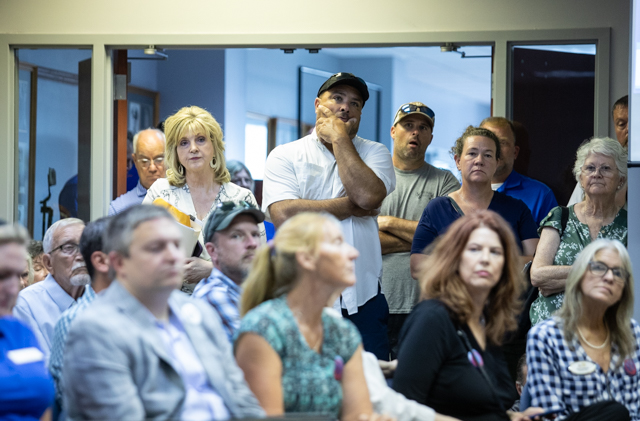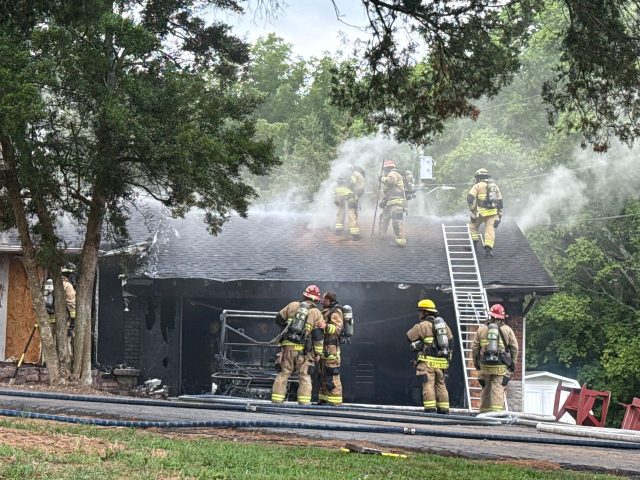City approves fifth property purchase for stormwater mitigation
Published 2:24 pm Thursday, July 17, 2025
The city’s efforts to mitigate flooding along Cave Mill Road continued Tuesday as commissioners approved a $270,600 purchase of 1112 Cave Mill Road, the fourth property the city has purchased along Cave Mill and the fifth one acquired since April’s flooding event.
Mayor Todd Alcott was absent from the meeting.
Andy Souza, head of Bowling Green Public Works, said the plan with these properties likely involves tearing down each of the flood-damaged homes and then repurposing the land into stormwater mitigation areas.
Trending
“ … We’re trying to maximize how much water we can store at the site,” Souza told the Daily News. “So the more water we store means the less water is on the road, the less water may be getting into other people’s crawl spaces.”
Cave Mill Road was one of a slew of roads around Bowling Green and Warren County inundated with floodwaters when a multi-day stretch of rain dumped more than 10 inches of water across the region.
The weather event led to dozens of sinkholes opening, several water rescues and, on Cave Mill, a six-foot deep puddle near the intersection with Dishman Lane. At nearby 1050 Cave Mill Road, 20 feet of water stood on the property.
Including the purchase approved Tuesday, four properties along Cave Mill Road and one on Brighton Avenue have been acquired, so far totaling over $1.56 million.
Souza said the reason Cave Mill has seen the most properties purchased by the city is because “it has the biggest impact for the biggest amount of citizens.”
He said the mitigation projects also fit it with the state’s multi-million dollar plan to widen Cave Mill Road.
Trending
“It’s going to go up in elevation, so we get the road out of the flooded area,” Souza said. “Now we’ve got more room to store (water) so everybody that drives that road, city residents, county residents, tourists, everybody benefits from not having that thing flooded.”
The city has closed on three of the now five properties. Souza said current residents will not start moving out of the first home until mid-August, while residents will stay in two other homes until October.
He said once residents are gone, utilities will be turned off at the homes and Scott & Ritter, the demolition contractor for the city, will come in and “do what they need to do.” Before any demolition happens though, Souza said personnel with the Bowling Green Fire Department will be able to come to the houses to train.
“If they want to come cut (a) hole through the roof or practice, since we’re tearing these houses down, fire gets to train on them first,” he said.
Souza said above all, the purchases are voluntary.
“We are not doing eminent domain or condemnation,” he said. “This is a voluntary process. One of the houses that we also approached said no, and that’s totally fine.”
Commissioners also heard an update on the city’s stormwater utility and fee-in-lieu-of-construction (FILOC) project, which promises to provide long-term funding for future upgrades needed to the city’s stormwater system.
Officials have been looking into a stormwater utility since January, when the idea was first floated during the city’s strategic planning meeting.
Courtney Howell, the city’s environmental compliance coordinator, told commissioners that the plan is to implement a $4 charge on monthly water bills for single family residential units and duplexes, with a $2 per month charge on multi-family units and those living in mobile homes. For businesses in the city, charges would be based on equivalent residential units (ERUs).
Nick Lawhon, the city’s geologist, stated in the meeting that an ordinance implementing the utility and the FILOC could be on the city’s agenda in “the next two or three months.” If approved on time, the utility could start the rollout by Jan. 1, 2026.
Commissioners will meet again Aug. 5.








